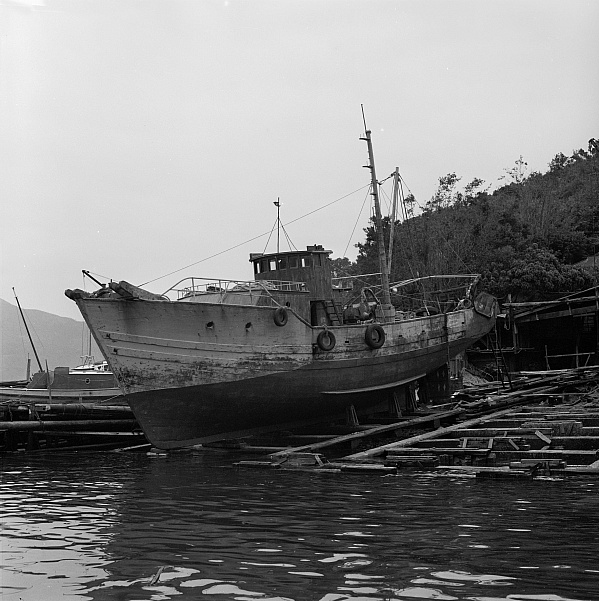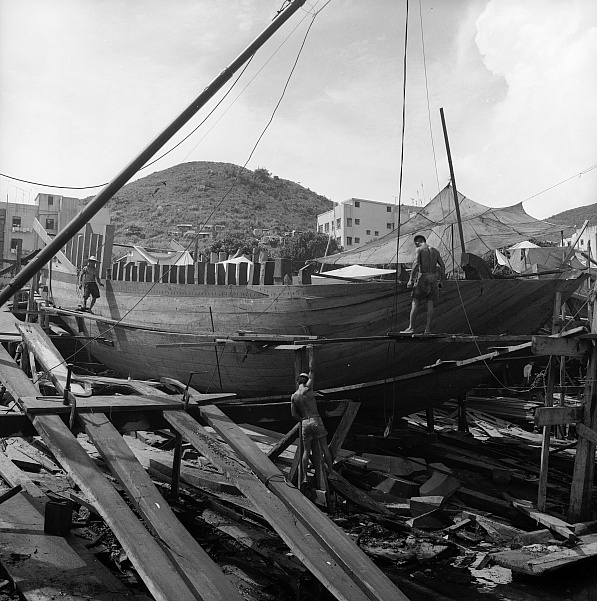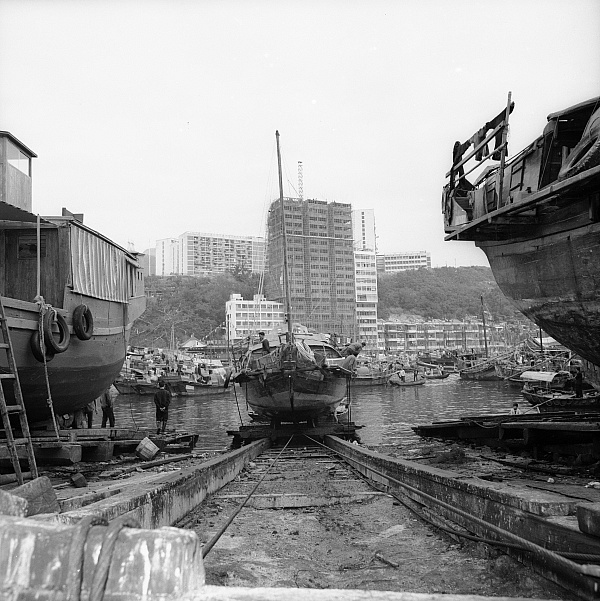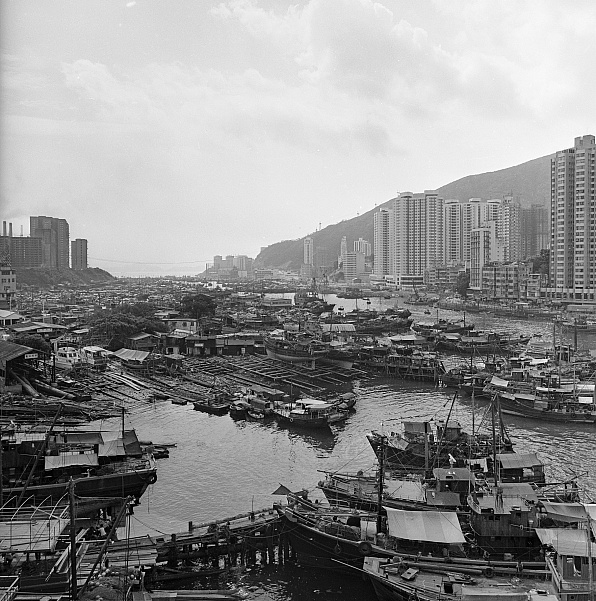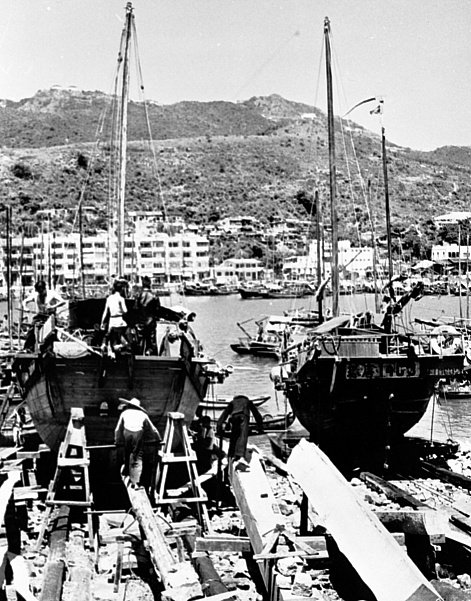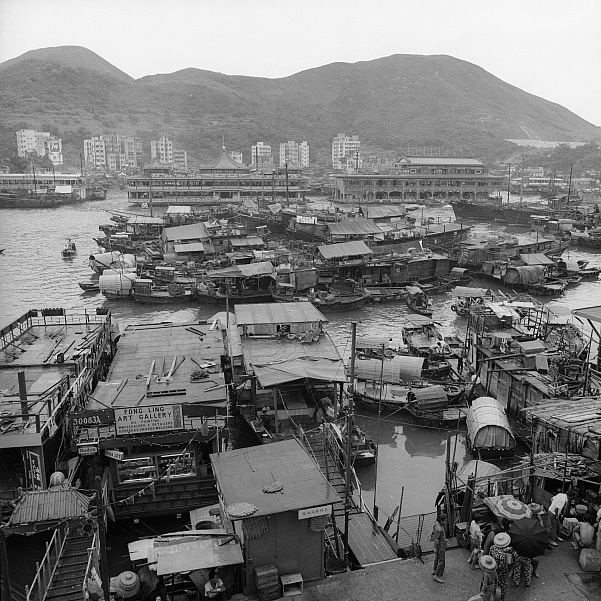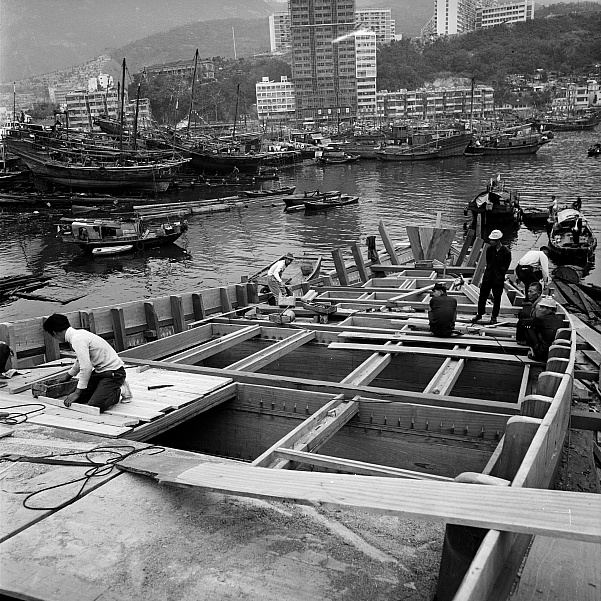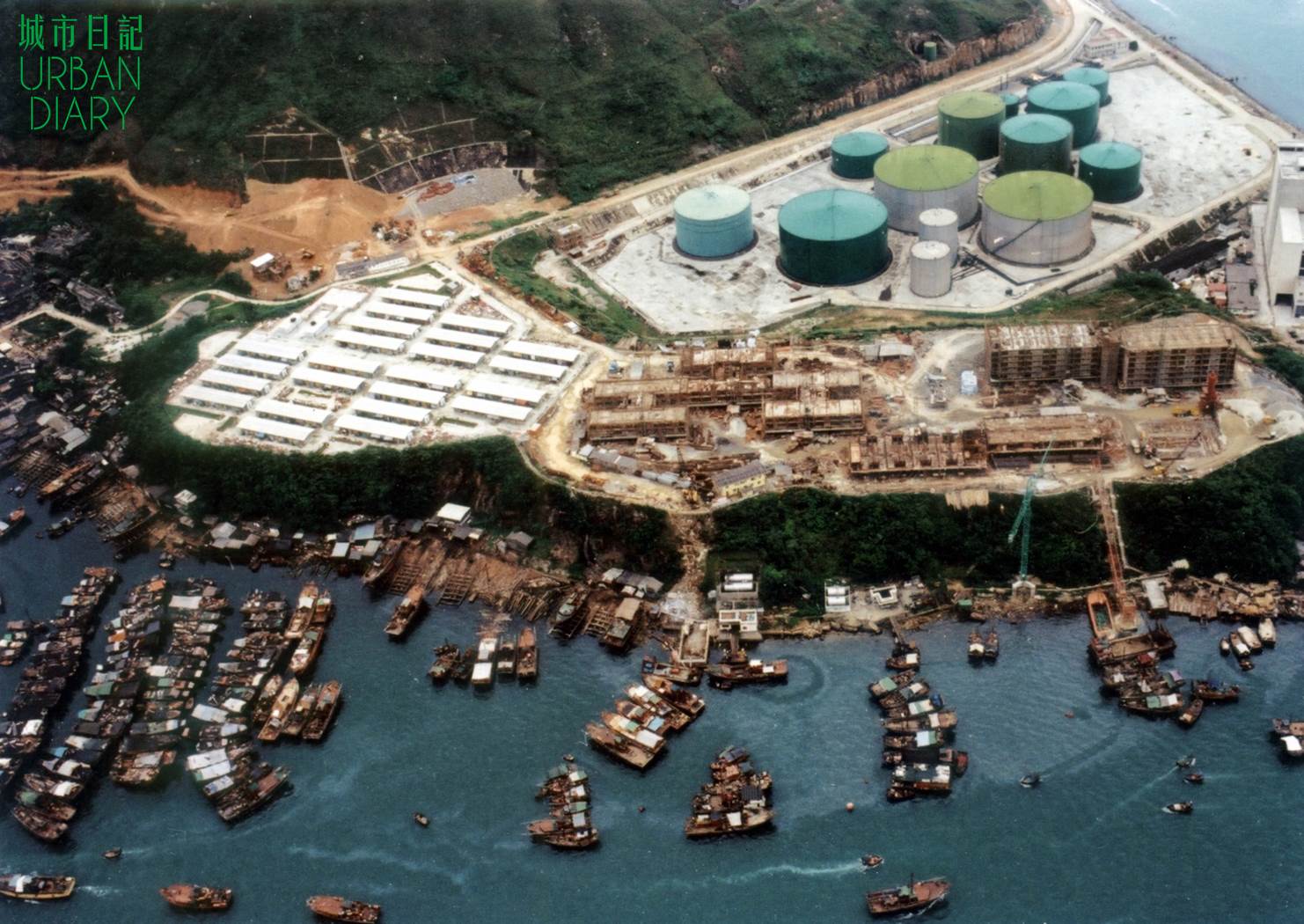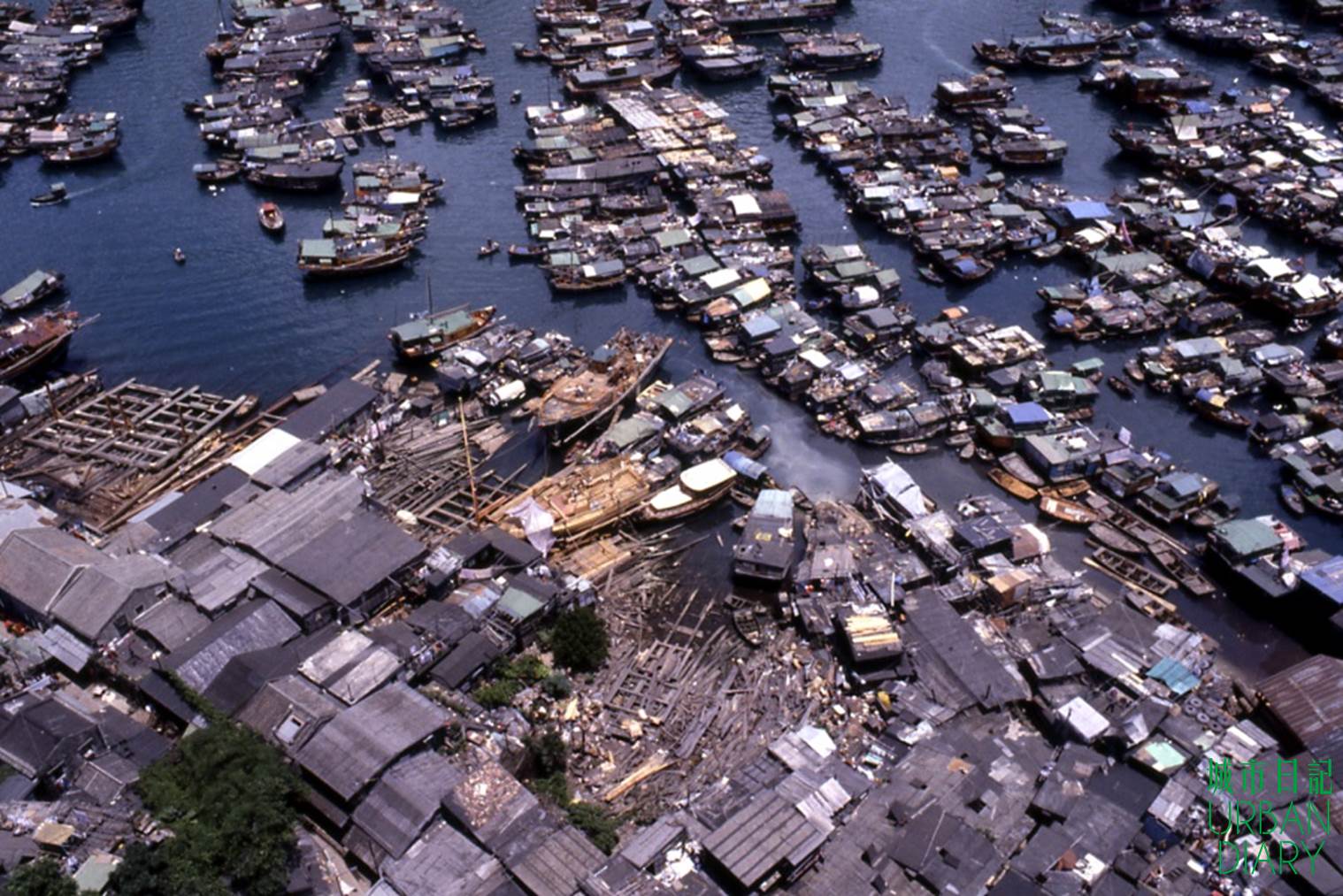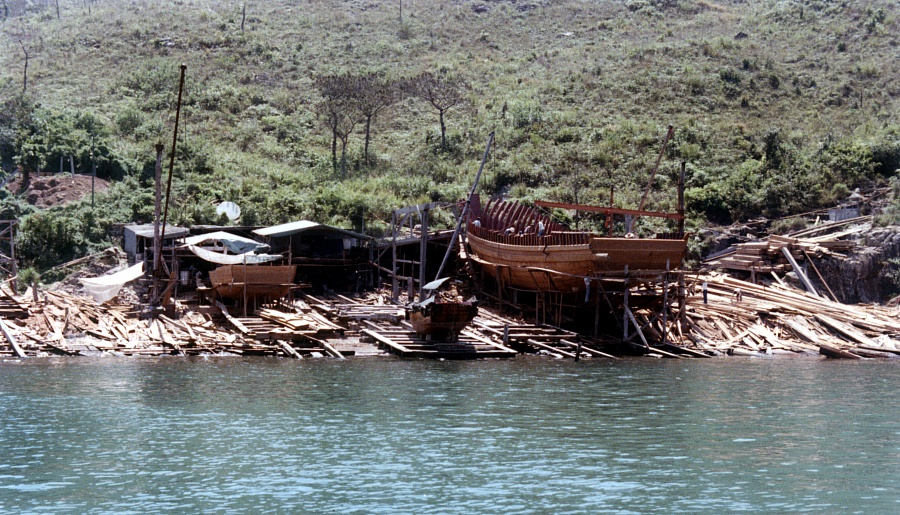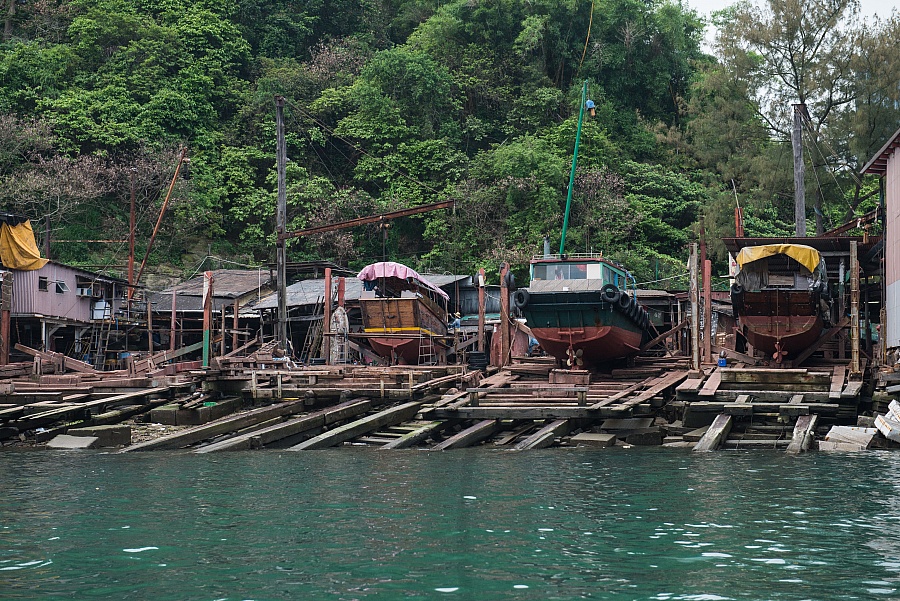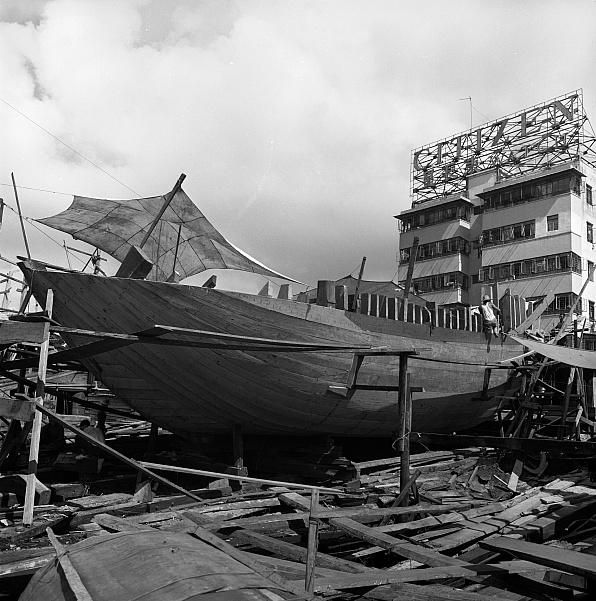Hong Kong’s early colonial and developmental history is intertwined with maritime trade. Dockyards and shipbuilding thus became one of the earliest industries of the colony. After 1841, Hong Kong’s first dockyard was located in East Point, Causeway Bay. In 1857, the Scottish entrepreneur John Lamont built the Lamont Dock in Aberdeen. By 1963, a few British firms combined a handful of shipyards into the Hong Kong & Whampoa Dock Company. The company also acquired both the Lamont and Hope Dockyards. At its height, the dockyards in Hong Kong employed over ten thousand skilled and unskilled labours, becoming one of the most important heavy industries in Hong Kong. After World War II, the ship-building industry faced a slow but steady decline. By 1970, the Aberdeen and Whampoa Dockyard was redeveloped into the Aberdeen Centre, marking the end of an era.
The British dockyards mainly served large business ships, tankers, and military ships, and largely operated independent from the wooden shipyards on the other side of the Aberdeen Harbour.
At the height of its fisheries industries in the 1960s and 70s, the Aberdeen and Ap Lei Chau Praya were closely connected to the life and work of its fishing population. The uneven mudflats and rocky beaches of Ap Lei Chau gave birth to stilt houses and shipyards all across the island. According to Lo Kam Kwan, owner of Hing Tai Yee, stilt houses evolved from squatter boats, “As dirt and mud piled up, squatter boats got caught along the shores. The boat people used wooden stilts as a foundation for their dwelling, which slowly developed into stilt houses.”
The stilt houses and shipyards were scattered from the western (i.e. Ap Lei Chau Estate) to the eastern shores (i.e. Larvotto). In 1985, the massive reclamation project along the coastline led to the removal of shipyards to the Ap Lei Chau Praya Road. The shipyards were allowed to operate on short-term leases. In recent years, the completion of the Wind Tower Park has further segregated the shipyards on both sides of the harbour.
Shipyards in Aberdeen operate on unique wooden slipways called “pai”. A “pai” is a rectangular, movable platform made of interlocked pieces of wood. They are moved along a pulley system with cables. During low tide, workers could rest a boat on the platform, and pull it into the shipyard for repairs.
In the past, shipyards managed both shipbuilding and repairs. The early masters were so experienced that they did not require any design sketches. As Tang Kwok Ming explains, design sketches are the product of a new generation of fishing boats, “The old craftsmen in Ap Lei Chau didn’t need design drawings. They could construct a ship from scratch. New fishing boats emerged in the 70s and 80s, and design drawings became more common.”
As a result of the lack of raw materials, and northbound movement of fishing operations, shipyards in Hong Kong lack new blood. We talked with a 30 year-old shipyard worker who was already the youngest worker in Ap Lei Chau. Nowadays, shipyards usually focus on the repair of fishing boats, pleasure yachts, and small fiber ships. Those in the Po Cheung Wan and Sham Wan areas are focused on pleasure yacht; whereas those next to Ap Lei Chau Estate still do fishing boat repairs.
September and October used to be the busiest months for shipyards. Because of the generous amount harvest, fishing boats have to repair their hull every so often. A shipyard which operates from early morning till midnight could repair as much as 15 boats a day.
Although large ships go back to mainland China for repairs nowadays, there is still a demand for local ship repairs. The workers usually bring the boats on a platform, remove all the attached shells, and re-paint the hull.
Recently, shipyards in Ap Lei Chau face the pressure of real estate development. In order to sanitize its neighbourhood around Larvotto, Sun Hung Kai Properties have submitted proposals to the Town Planning Board in hopes of rezoning the “industrial use” of shipyards into “recreational and shipyard use”. A proposal in 2010 suggested redeveloping one half of the current space into a park. Another proposal submitted in 2013 suggested redeveloping the area into a mix of yacht centre, museum, and retail shops.
The pressure faced by the shipyards is comparable to similar developments in South Horizons and even Ap Lei Chau Main Street. Yet, as the older kaifong have pointed out, parks are not the only use of land for Aberdeen’s coastline. Like Hong Kong’s bamboo scaffoldings, wooden slipways are a unique part of Hong Kong’s urban landscape. It remains an integral part of Hong Kong culture that has to be passed on and inherited.
